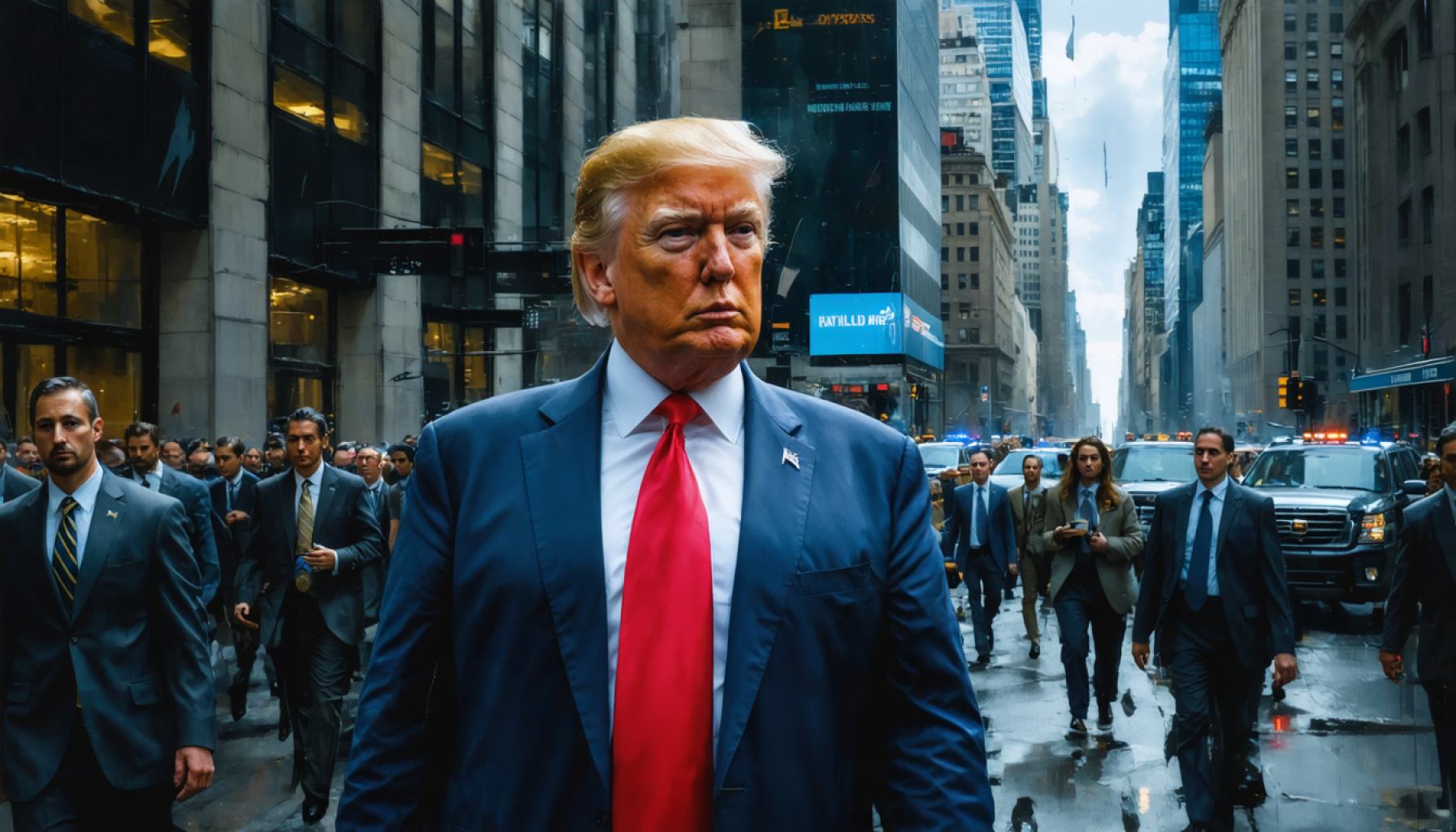
- Stock markets experienced significant declines following President Trump’s tariff announcements, with the Dow Jones, S&P 500, and Nasdaq dropping sharply.
- Despite a positive jobs report, investor focus shifted to China’s retaliation with 34% tariffs on U.S. goods, exacerbating market anxiety.
- The recent selloff is considered the worst since the early stages of the COVID-19 pandemic, raising concerns over potential long-term economic impacts.
- Experts project the U.S. combined tariff rate could rise significantly, leading to higher inflation and slowing economic growth.
- The current disparity between past market optimism following Trump’s election and today’s uncertainties underscores the influence of economic policies.
- Strategic and measured policy responses are crucial to maintaining market stability and investor confidence in an unpredictable global landscape.
Stocks plunged dramatically, echoing the market’s anxiety in response to President Donald Trump’s tariff announcements, disrupting a fragile global economic equilibrium. Investors watched in disbelief as nearly a year’s worth of gains evaporated within days, casting shadows over Wall Street’s bullish tenure.
With the power of an unexpected storm, the Dow Jones industrial average spiraled down by 9.2%, the S&P 500 by 10.5%, and the Nasdaq, packed with tech juggernauts, tumbled 11.4%. The woes intensified despite a flicker of good news in the form of an unexpectedly robust jobs report, which unveiled 228,000 new jobs against a slight rise in unemployment to 4.2%. Yet, the spotlight quickly shifted from this positive development to China’s retaliatory move—imposing hefty 34% tariffs on U.S. goods, further fueling market panic.
This selloff unfurled as the worst since the early shockwaves of the COVID-19 pandemic, when markets plummeted with gut-wrenching speed. During that crisis, Congress sprang into action with stimulus measures, spurred by a controversial but immediate reaction that stabilized the markets. This time, however, the path ahead appears murky, with tariffs promising to wield a long-term economic drag rather than a quick fix.
The disparity between post-election optimism and current uncertainties is jarringly stark. Following Trump’s election, markets were buoyed by expectations of business-friendly policies, propelling the S&P 500 up by 4.5%. Today’s trading environment tells a different story, with the index down 17.4% from its February zenith, a testament to how swiftly fortunes can change when shaken by policy decisions.
Behind this unfolding drama, experts at Oxford Economics provided a sobering analysis: they foresee the U.S. combined tariff rate soaring to a staggering 24%, reminiscent of the protectionist swells of the 1930s. In their forecast, higher taxes on imports could amplify inflation to 4.5%, choking economic growth and stifling corporate profits. The tantalizing promise of bustling consumer spending, particularly among the affluent buoyed by stock market gains, hangs in the balance, threatened by eroding confidence.
As traders navigate these shifting sands, the key takeaway is clear: economic policies have far-reaching implications, and strategic, measured responses are critical to sustaining market stability. If this tide of uncertainty is not stemmed, its repercussions may ripple through the broader economy, highlighting the delicate interplay between geopolitical maneuvers and market health. Now, the eyes of investors are firmly set on the next move in this high-stakes global economic chess game.
The Hidden Ripples of Trade Tariffs: What Investors Need to Know
Market Dynamics and Strategic Responses
The recent plunge in stock markets underscores the profound effect that economic policies, specifically trade tariffs, can have on global financial stability. While the immediate reaction saw significant losses in major indices like the Dow Jones, S&P 500, and Nasdaq, the broader implications could stretch into a protracted period of volatility.
Real-World Use Cases and Market Reactions
1. Tariff Impacts on Global Trade: The announced tariffs, and the resulting retaliatory actions from China, are poised to disrupt not only the direct trade of goods but also the supply chains that many global companies rely on. Businesses with deep ties to international manufacturing, such as automotive and electronics, may face increased costs, leading to higher consumer prices and reduced competitiveness.
2. Corporate Strategy Adjustments: Companies like Apple, which rely on complex international supply chains, may revisit and alter their sourcing strategies. In recent years, similar tensions have pushed firms to consider reshoring, diversifying suppliers, or investing in technology to mitigate tariff impacts.
Controversies and Limitations
– Economic Predictions: The Oxford Economics forecast of elevated tariffs and subsequent inflation presents a challenging outlook, with some analysts arguing that increased tariffs could push the economy into stagnation rather than growth. Critics suggest that such protectionist measures may backfire, potentially resulting in job losses and reduced consumer spending power.
– Long-Term Economic Drag: The uncertainty surrounding future tariff negotiations underscores the risks of relying heavily on protectionist policies. Historical precedents, such as the Great Depression-era tariffs, warn against the potential for prolonged economic struggle if strategic adjustments are not implemented swiftly.
Pros & Cons Overview
Pros:
– Potential short-term boost in domestic industry protection.
– Encouragement for local businesses to innovate and adapt.
Cons:
– Increased production costs passed on to consumers.
– Retaliation from trade partners, escalating into broader trade wars.
Tutorials & Compatibility
How to Navigate Market Volatility:
1. Diversification: Ensure your portfolio is spread across various sectors and asset types to reduce risk.
2. Monitor Economic Indicators: Keep a close watch on macroeconomic indicators, including inflation rates and employment statistics, to gauge future market movements.
3. Consider Hedging Strategies: Utilize options or derivatives to protect your investments against significant market downturns.
Conclusion & Quick Tips
– Stay Informed: Following developments in tariff negotiations and understanding their implications on markets can provide a strategic edge.
– Evaluate Investment Horizons: Align your investment strategies with both short-term realities and long-term goals, taking into account potential policy shifts.
– Consult Financial Advisors: Engage with experts to tailor your investment strategies to current economic conditions.
By keeping abreast of these developments and applying strategic responses, investors can better navigate the complexities of the current market landscape.
For additional insights into market trends and strategies, visit NY Times, a trusted source for comprehensive financial news and analysis.



